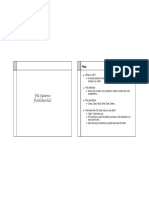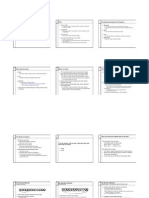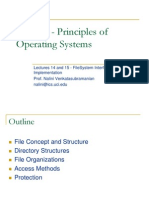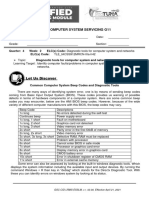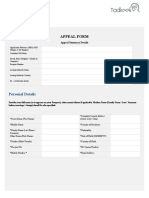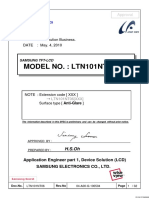0% found this document useful (0 votes)
9 views20 pagesLecture4 FileOrganization
The document discusses file system implementation, detailing the layered architecture that includes application programs, logical file systems, and basic file systems. It explains the structures required for file systems, both on-disk and in-memory, including file control blocks and directory management. Additionally, it covers directory implementation methods and allocation strategies for disk blocks.
Uploaded by
abdonasr1998Copyright
© © All Rights Reserved
We take content rights seriously. If you suspect this is your content, claim it here.
Available Formats
Download as PDF, TXT or read online on Scribd
0% found this document useful (0 votes)
9 views20 pagesLecture4 FileOrganization
The document discusses file system implementation, detailing the layered architecture that includes application programs, logical file systems, and basic file systems. It explains the structures required for file systems, both on-disk and in-memory, including file control blocks and directory management. Additionally, it covers directory implementation methods and allocation strategies for disk blocks.
Uploaded by
abdonasr1998Copyright
© © All Rights Reserved
We take content rights seriously. If you suspect this is your content, claim it here.
Available Formats
Download as PDF, TXT or read online on Scribd
/ 20












